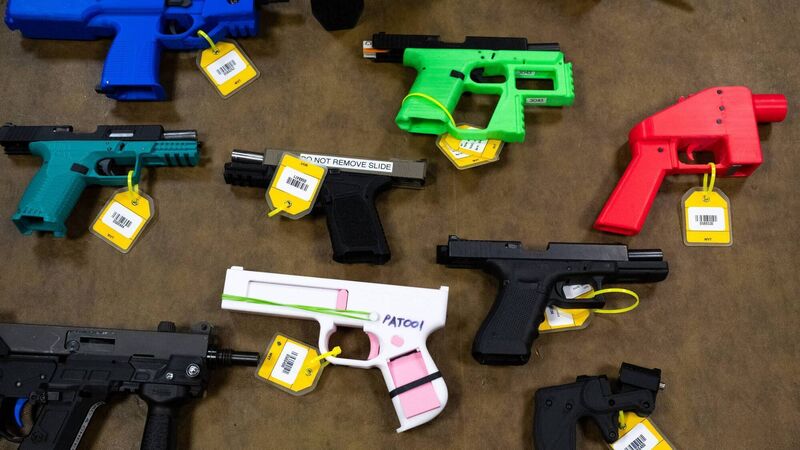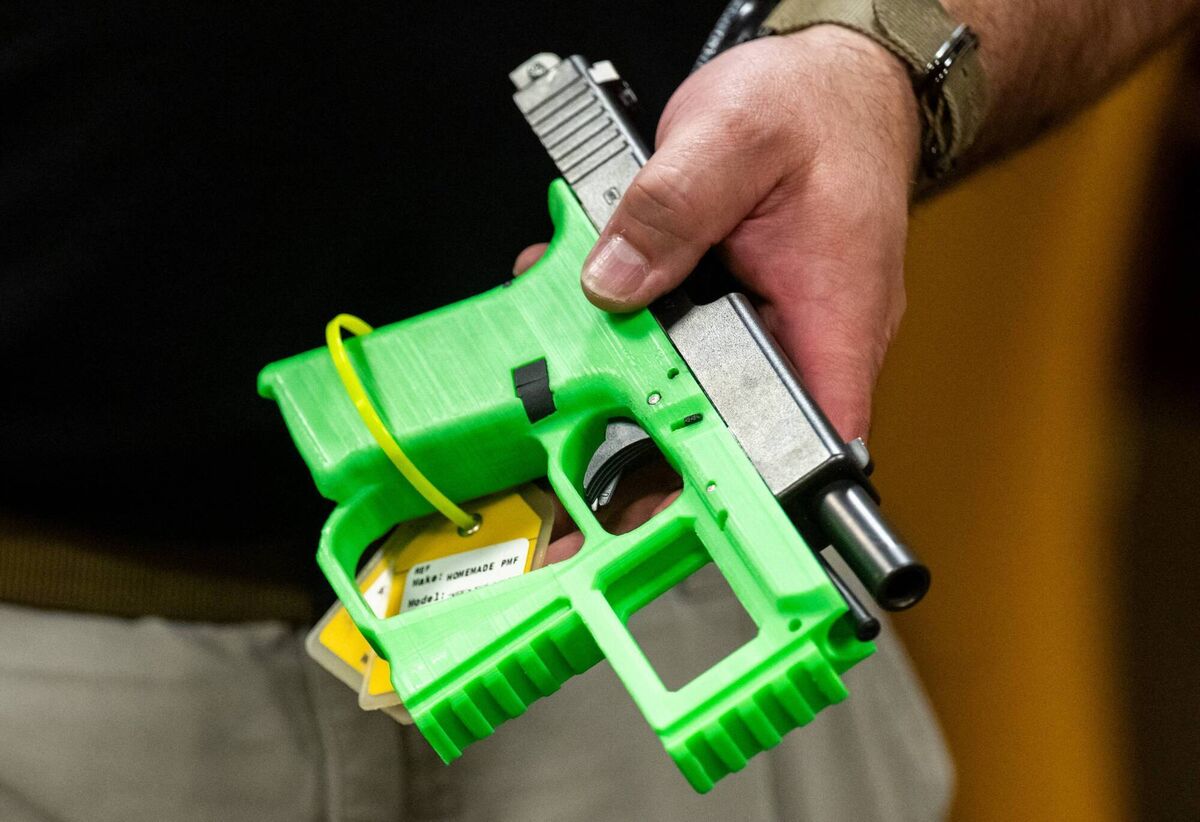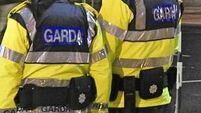Ghost guns in Ireland: how criminals are using 3D printers to make untraceable weapons

‘Ghost guns’ which can be made for a few hundred euros on a cheap, commercially available 3D printer are being found by gardaí across Ireland.
Recent seizures in Cork, Dublin, Tipperary, and Clare have involved handguns, printed in the same dark green resin. The basic design is embellished with distinctive patterns across the handguns.
But 3D printers can also produce guns as powerful as fully automatic assault rifles with designs for these readily available online.
Luigi Mangione allegedly killed former UnitedHealthcare chief executive officer Brian Thompson with a 9mm 3D printed ghost gun and silencer in Manhattan, New York, in December 2024.
If convicted, the case would be the first known assassination in the US involving a 3D-printed firearm.
3D-printed guns are now also being used in active military conflict, with rebel forces in Myanmar printing an arsenal from the jungles after a military junta took over the country in a coup in 2021.
The firearms are also known as ‘ghost guns’ because they are almost impossible to trace, with no registered manufacturer or serial numbers.
Files to print these guns are now easily downloadable online and do not even require delving into the dark web to access them.
Ghost guns seized in Ireland in recent months appear to be a model called a Harlot, a 22lr break-action single-shot pistol.
The Harlot is described online as ‘an excellent throw-away’ gun, with a parts kit costing approximately €20.
Two brothers were found with a loaded 3D-printed pistol and ammunition in an Opel Corsa in Charleville, Co Cork, in August.
They allegedly sourced and distributed guns and are currently remanded in custody awaiting trial.
The gun and ammunition were found after the car they were travelling in was searched by gardaí in a service station on August 20.
Also last month, a construction worker was arrested in Dublin, accused of carrying a 3D-printed gun and ammunition.
His charges include two counts of unlawful possession of a 3D-printed Harlot pistol and eight rounds of .22 ammunition.
And earlier this year, there were five additional seizures in Dublin, Tipperary, and Clare.
Superintendent Gary McPolin of Cork North West, the garda region which encompasses Charleville where the 3D printed handgun was recently seized by gardaí, said that their decreased cost and increased accessibility is a serious concern for gardaí.
Stricter regulation of Youtube and other social media sites which host content in which people demonstrate how to print a potentially lethal gun must be introduced and implemented, he said.
“It’s an emerging threat,” Supt McPolin said. “These ghost guns are untraceable firearms. Internationally, you have a sharp increase in use of these ghost guns and the internet is facilitating access to them.
“Obviously they're being used for violence, extremism and general criminality. And, unfortunately, they're falling into the hands of individuals who should not have access to them, including young people and people of unsound mind."
He said the difficulty for any police force is that online platforms are offering available manuals or instructional videos. "That is a danger," he said.
Superintendent McPolin said far more rigorous oversight of social media companies is necessary to ensure that content online is safe and does not fuel violence.
Such guns may also be more difficult to detect at airport X-rays and scanners depending on the materials used to construct them, he said.
All of the handguns seized here in recent months appear to have come from the same supplier, a garda source told the .
“The recent guns seized seem to come from the same supplier, that could be one individual with one 3D printer using the one design,” a garda source said.

“Investigations are underway as to whether they all came into the country at the same time,” they said, or whether they were made locally.
“They are all the same design and look very similar.
“I’m not aware of 3D-printed guns being produced in factories here for organised crime."
An engineer who works in 3D printing said that while a printer which can be bought for less than €200 can produce a gun, for slightly more investment, a much more reliable firearm can be produced.
“The thing with the current cheap guns is that they can fire maybe a few bullets but they may also not fire correctly and cause harm to the user due to using plastic or softer materials.”
But more upmarket printers, which sell for about €1,000, can print with tougher, engineering-grade materials, like carbon embed or glass fibre materials, they said.
“People have always been making guns from home materials but 3D printing has made it so much more accessible to people with no knowledge and plans/files being downloadable from the dark web.”
No regulatory blocks on 3D printers that can produce guns are currently in place, the engineer, who asked not to be named, said.
Europol has issued warnings about the ready accessibility of these new deadly weapons and of far right extremists obtaining them.
Chief Constable Gerda van Leeuwen at the Dutch National Police (Politie) described the development of the firearms as both a current and future threat at a Europol conference on the subject.
International cooperation is crucial to counter this threat, he said.
A garda spokesperson said: “An Garda Síochána is concerned about the capacity and capability for criminals and criminal networks to access firearms in any form.
"An Garda Síochána has previously highlighted that criminal networks will and do utilise advances in modern technology for their criminal endeavours, which includes the advances in 3D printing technology."
Gardaí recently made a number of interventions and seizures of 3D printed firearms, but these are not the first interventions of this kind, the statement said.
"In March 2023, a 37-year-old UK National was convicted after being caught with firearms components, a guide for the 3D printing of weapons and images of child abuse. "This is not just an Irish problem.
"The Europol 2025 SOCTA (Serious and Organised Crime Threat Assessment) ‘The changing DNA of serious and organised crime’ clearly sets out the concerns at international level on the how emerging technologies, including 3D printers and printed firearms, amongst others, provide criminal networks with entirely new capabilities.”











